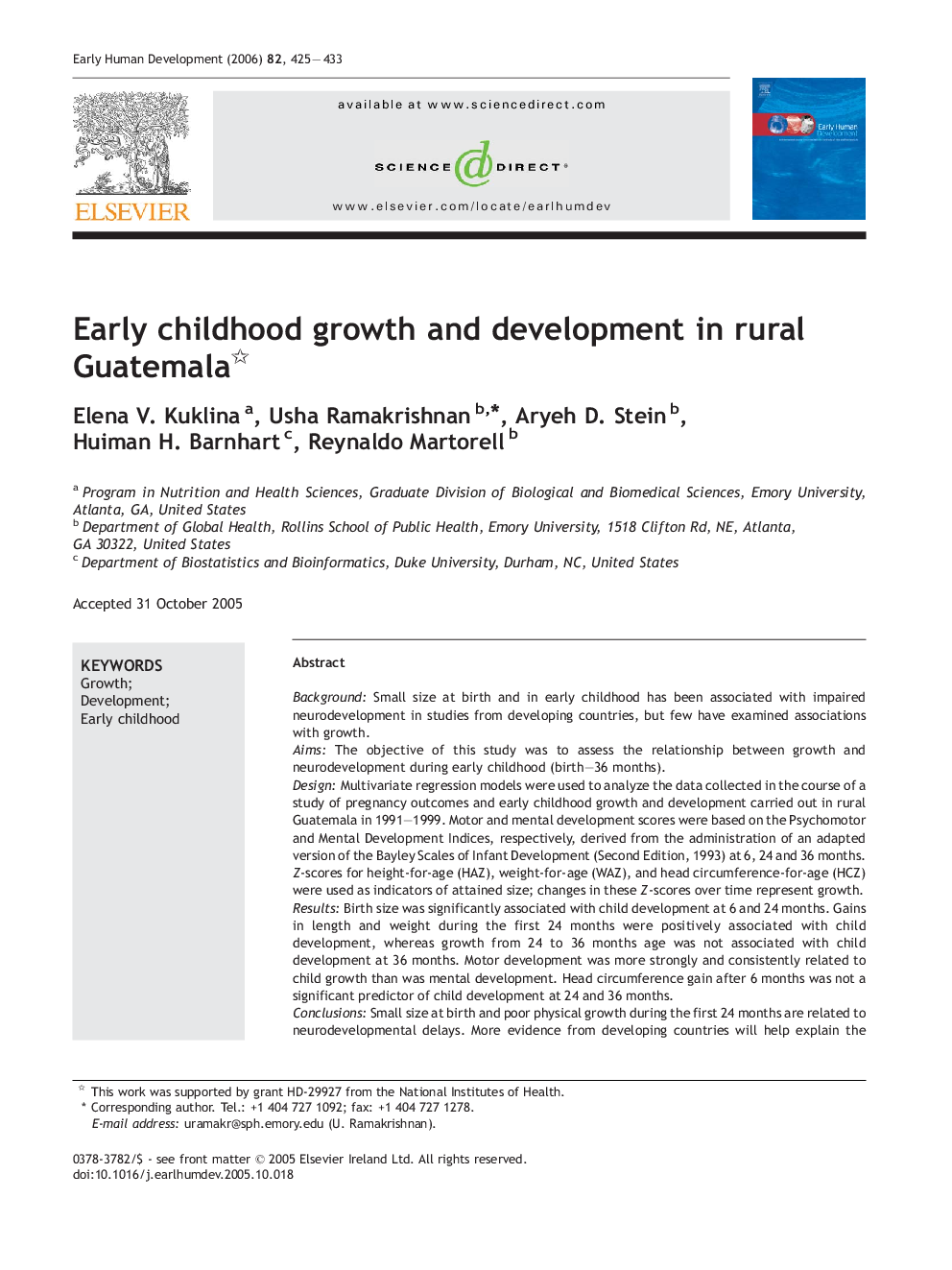| Article ID | Journal | Published Year | Pages | File Type |
|---|---|---|---|---|
| 3918221 | Early Human Development | 2006 | 9 Pages |
BackgroundSmall size at birth and in early childhood has been associated with impaired neurodevelopment in studies from developing countries, but few have examined associations with growth.AimsThe objective of this study was to assess the relationship between growth and neurodevelopment during early childhood (birth–36 months).DesignMultivariate regression models were used to analyze the data collected in the course of a study of pregnancy outcomes and early childhood growth and development carried out in rural Guatemala in 1991–1999. Motor and mental development scores were based on the Psychomotor and Mental Development Indices, respectively, derived from the administration of an adapted version of the Bayley Scales of Infant Development (Second Edition, 1993) at 6, 24 and 36 months. Z-scores for height-for-age (HAZ), weight-for-age (WAZ), and head circumference-for-age (HCZ) were used as indicators of attained size; changes in these Z-scores over time represent growth.ResultsBirth size was significantly associated with child development at 6 and 24 months. Gains in length and weight during the first 24 months were positively associated with child development, whereas growth from 24 to 36 months age was not associated with child development at 36 months. Motor development was more strongly and consistently related to child growth than was mental development. Head circumference gain after 6 months was not a significant predictor of child development at 24 and 36 months.ConclusionsSmall size at birth and poor physical growth during the first 24 months are related to neurodevelopmental delays. More evidence from developing countries will help explain the underlying mechanisms and identify appropriate interventions to prevent neurodevelopmental delay in early childhood.
